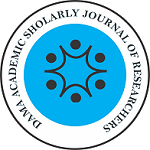Dadzie Boafo Eric1*| Amponsah Richard2
1*ORCID: https://orcid.org/0009-0001-4782-4125
1*, Department of Procurement & Supply, School of Business, Takoradi Technical University
2, Department of Procurement, Logistics & Supply Chain, GCTU Business School, GCTU
Abstract
The success of logistic operations consists in ensuring the synchronisation of material flows thanks to the coordination of processes and the use of resources in the company and the supply chain. Consequently, this ensures the availability of goods in the place and time the customer expects. A critical dimension of logistics management success is the cost level, both logistic and manufacturing costs and transaction costs (Witkowski, 2010; Pfohl 1998). The impact of material flow organisation on transaction and production costs is a consequence of the nature of logistics processes, which support production processes, transactions, and customer service. Logistics and supply chain should not be confused. Logistics is a narrowly focused concept (narrower than the SCM), which means the globalisation of resource management from every local unit to the entire network of production points. In turn, supply chain management is a more complex category. Supply chain management involves logistics and thus performs end-to-end optimisation – within the enterprise and when working with counterparties. Efficient logistics management aims to achieve maximum competitiveness and profitability for the company and the entire network structure of supply chains, including the end-user. In reality, this is not always the case, as logistics tend to face various challenges in coordinating the supply chain’s multiple functions. These include transportation issues, technological and skills deterrents, and issues with customer service. Customers want complete clarity into where their delivery is on time, so keeping them waiting is a significant cause for concern. This is a major problem because meeting customer demand and delivery on time helps to complete a successful supply. After conducting the research study above, the researcher came up with the following conclusions. The researcher concluded that the following are the modes of transport used at GHACEM: inland water transport (shipping), rail transport for longer journeys, road transport for short hauls and air transport. Again, the researcher concluded that legal procedures are the main factors influencing the selection of transport modes at GHACEM. The size of the load to be shipped out, either in large or small volumes, distance coverage, speed and transit time and risk rate are the other factors influencing the selection of transport modes at GHACEM. Moreover, the researcher concluded that improving Just in Time is the main impact of transport management on operational efficiency. Improvement of delivery, increased responsiveness, quality and safety in distribution assurance are the other impacts of transport management on operational efficiency. Lastly, the researcher concluded that the following are the challenges of transport operations at GHACEM: transport operation management is a capital-intensive venture in operations of the organisation, fixed or standing costs are incurred when transport vehicles and concrete mixers are standing still and not working, insurance cost associated to the vehicle or equipment as well as the physical goods in transit may be expensive, variable or running costs are incurred whilst the vehicles or transport equipment are in operations and bad roads and poor infrastructure.
Keywords: Competitive Tendering | Procurement Planning | Value for Money | Procurement System, Cost-Reduction
Citation: Dadzie., B., E., & Amponsah, R., (2025), “Evaluating the Role of Logistics in Supply Chain Management”, Dama Academic Scholarly & Scientific Research Society 2025, 9(11): pp.112-133, DOI: https://dx.doi.org/10.4314/dasjr.v10i1.5

